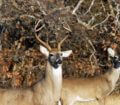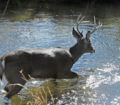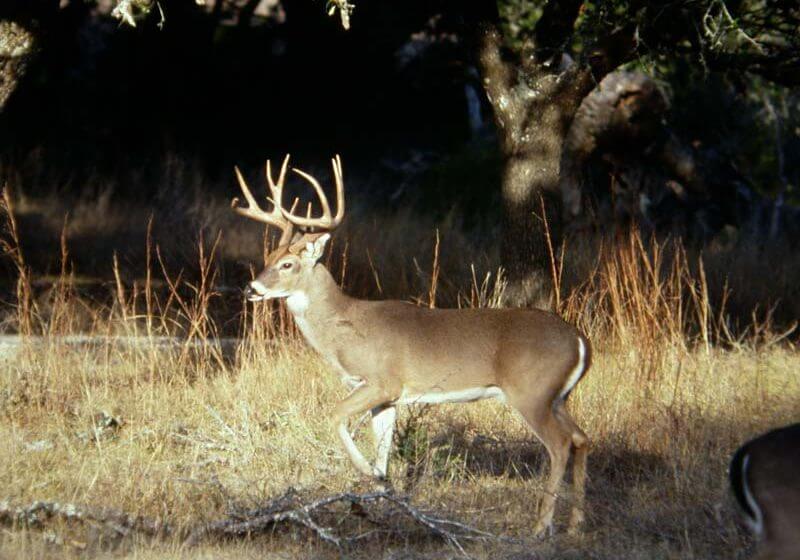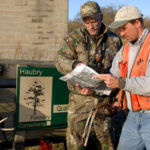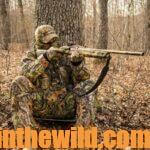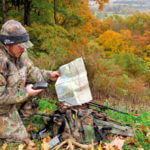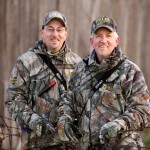Editor’s Note: Simply finding a deer trail won’t provide enough information to hang a tree stand and plan to hunt that trail. Many ingredients make some deer trails better than others. To effectively hunt trails, you need to know:
* why and when the deer use the trail;
* where the deer will go; and
* what time of day or night the deer will move down the trail.
With this information, you can hunt trails and take deer more productively than a hunter who simply finds a trail and hangs a tree stand. Let’s take a closer look at some different types of deer trails, and what you can learn from these trails to help you hunt deer more effectively.
Sometimes deer take routes through the woods without leaving trails. Even when deer frequent a particular section of land, they may not walk down a certain path as they move through this region but instead will meander through the woods. Often meandering trails occur where two types of habitat pinch-down a woodlot and create a funnel. Most of the time, deer will meander through that funnel rather than taking a specific route. Falling leaves will keep you from seeing little if any sign on the ground.
According to Sam Spencer, a retired wildlife biologist from Montgomery, Alabama, and an avid longtime deer hunter, “Hunting a funnel that narrows-down to one specific place improves the odds of the deer coming by you, instead of their walking past you out of range. For example, where a dead tree is down in a funnel area that the deer must walk around is a good place to set-up your stand. Any break in the funnel where deer must pause to go under a fence or to cross a stream also will be productive spots for taking deer. The deer will be stopping and thinking about how to traverse the obstacle, rather than looking for danger. Too, they’re not spending as much time looking up in the trees if they’re negotiating an obstacle in the funnel.”
Because terrain trails concentrate deer coming and going from two different directions onto a very-narrow path, bowhunters often have success on them. You may find a terrain trail in a saddle between two mountains, since deer will cross the mountain range in this saddle – the lowest place. By taking a stand on either side of the mountain, the hunter has the best chance to bag a buck. If you place your stand in the middle of a saddle and spook deer, the animals may run back the way they’ve come and spook other deer coming up the trail. However, if you take a stand on either side of a saddle, if a buck does spook, he either may run to the left or the right, instead of back up the trail from where he’s come. Then you’ll have an opportunity to shoot at deer coming down the trail all day – even if your spook one or two animals.
Deer often will utilize a terrain break in flatlands by walking a creek bottom or a wash through thick cover. Many hunters have learned that deer like the path of least resistance, just like humans do. For example, a small creek crossing that is grown-up on each side and has an opening in the brush will be where deer usually will go through – just like people will.
You easily can identify a terrain trail that follows a path along the edge of a creek or a riverbank. Traveling along the edges of water gives deer an instant and immediate terrain break they can use to put between danger and themselves, particularly if hunters or other predators spook the deer. Depending on the position of a trail along a creek or a pond, you may find wading in the water and hunting from the water and/or if possible, putting up a tree stand on the opposite side of a small creek from the trail the most productive. Or, when hunting a backwoods pond with flooded timber, place your tree stand in one of the trees out in the pond. Then you can approach and leave your stand by wading the water and eliminate the human odor you normally will leave on the ground.
During the rut, deer often will walk mating trails. As a buck expands his territory in January to try and service more does, he probably will have a regular route he travels in search of females.
To learn more about hunting deer with John E. Phillips’ Amazon Kindle eBooks, print books and Audible books (the latest Audible is “How to Hunt Deer Like a Pro”) and Nook books, click here at https://johninthewild.com/books/#deer. You can type in the name of the book and download it to your Kindle, and/or download a Kindle app for your iPad, SmartPhone or computer. For a free download on how to make jerky from venison to provide a protein-rich snack, choose “How to Prepare Venison Jerky: The Ultimate Snack Food” at johninthewild.com/free-books.

